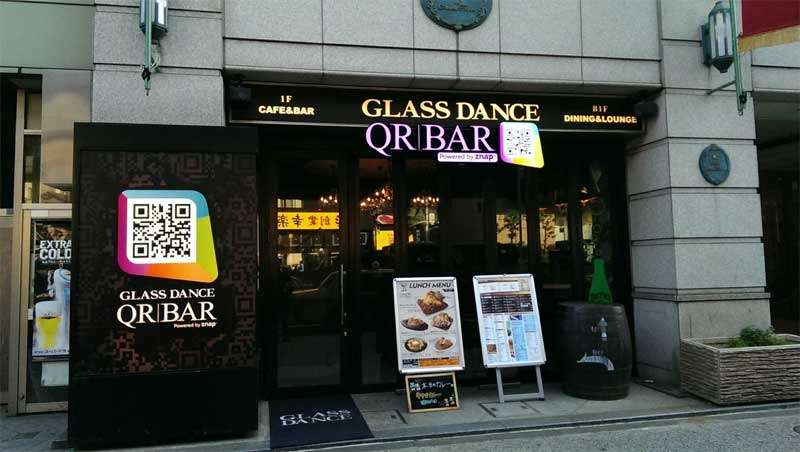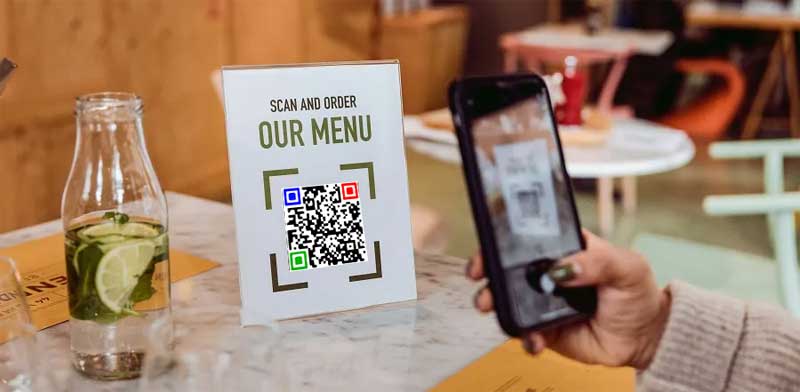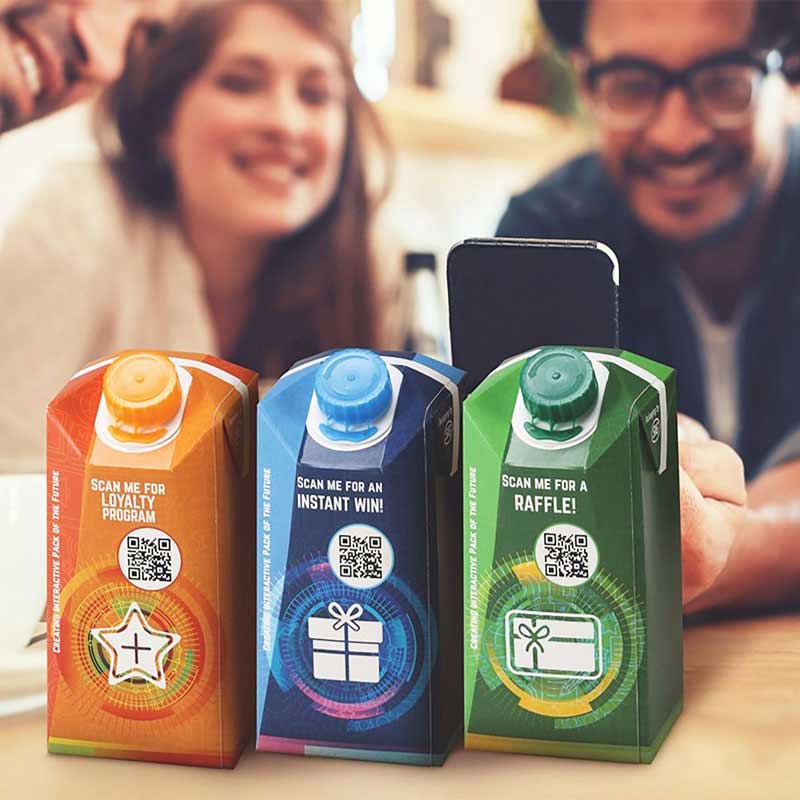Australia QR Code Statistics shows a rapid growth in the use of QR Codes away from the obligatory Covid check in apps by businesses and organisations. We have been creating dynamic and static Australian QR Codes for customers for over 10 years and at the end of 2019 only had a handfull of customers.
The COVID-19 pandemic stimulated a move to contact-free business in all parts of the world. This resulted in an opportunity for all businesses and organisation plus indirviduals to access this new technology to drive customers from offline material to online content. Businesses, government establishments, and consumers embraced QR Codes.
In this article we are going to look at how they have changed the landscape.
Australia QR Code Statistics Table Of Content
- QR Code Marketing
- QR Codes in Industry
- QR Codes in Hospitality
- QR Codes in Payments
- QR Codes Statistics
- QR Code Uses
- QR Code Trends
- Conclusion
QR Code Marketing

One bar in Japan earlier this year claimed to be the first to take orders using QR codes. Glass Dance, in Tokyo’s Roppongi district, is squeezing as much marketing juice as possible out of its unique ordering system with the nickname the ‘QR Bar’.
QR Codes today are used everywhere, largely for marketing purposes to deliver an enhanced customer experience by brands and businesses of all types and sizes.
QR Codes are used more than ever for marketing purposes, and various industry verticals. Thus, it is fair to say that about 60-65% of people use QR Codes on a daily basis for these uses.
Ausdtralia has about a 90% mobile penetration and so with nearly all of those being used for cobntactless contact over the last couple of years it has become obvious that we can harness this useage for many other purposes.
According to Google Trends, terms such as QR Code COVID, SA QR Code, COVID QR Code app, Service NSW, and more were the most searched queries in South Australia, Western Australia, New South Wales, and Tasmania.
QR Codes in Industry
The highest penetration of QR Code based on use-cases is for product information (51.5%) followed closely by event information (19.8%), to avail offers (12.5%), and app downloads (8.2%)
How will this change in coming years we saw on a trip to China pre Covid, where we bought meals, take away and much more using QR Codes in apps and for payment.
There’s no doubt QR codes give brands and companies a quick and easy mechanism to bring digital and physical together. And importantly, consumers are more willing to use them than ever.
This is a far cry from a poll conducted by Econsultancy in 2012, where 62 per cent of Australians didn’t know what QR codes were or how to use them.
In Australia, we really haven’t seen the full potential of QR codes. But the appetite is now there, so I think we’ll see a lot more creativity in 2022 and onward.
QR Codes in Hospitality

The other day my wife and I went to a popular restaraunt in a shopping centre and to our surprise when we sat down there was a brand new QR Code on the table with our table nemuber. There were a lot of people still lining up at the counter so we decided to try it.
The link was to a square ecommerce menu page and was quite easy to navigate etc. The beauty was we quite often order the same thing so now we just sit down and on our phone just click saved menu, pay and done.
This is happening all across the hospitality industry allowing staff to do what they are best at which is serving. Its not just in Australia.
Here are some additional fast facts to help you understand the utility of the QR code menu:
- 75% of Brazilians prefer to scan QR codes while shopping
- 25% of Irish consumers scan at least one QR code per business quarter
- 57% of Canadians use QR codes to obtain information about food products
- 52% of all American restaurants have already made the change to QR code menu
QR Codes in Payments
There are a whole range of QR Payment suppliers entering the market in Australia. Banks, hospitality menu providers, 3rd party providers like Paypal and square and many more.
It’s no wonder QR codes have been popping up everywhere: They provide customers with a simple, contact-free payment option, plus they’re quick and easy for businesses to implement.
Quick Response (QR) payments in Australia were given a set of guidelines issued by the Australian Payments Network (AusPayNet).
Designed to bring clarity and consistency around the use of QR codes for transactions, the guidelines are available for voluntary implementation by financial institutions, merchants and payment service providers.
The move comes as QR Code transactions are continuously growing in popularity, particularly accelerated by the COVID-19 pandemic. Such payments are generally easy to adopt, not requiring the need for additional hardware and devices which makes them attractive to merchants.
The global QR codes payment market size was valued at $8.07 billion in 2020, and is projected to reach $35.07 billion by 2030, growing at a CAGR of 16.1% from 2021 to 2030.
Australia QR Code Statistics
36.40 % scan at least one QR Code a week. The term QR Code was searched 60,000 times in Australia in 2021. In Brazil and Europe, QR Code usage is 7% and 8% of consumers, respectively, scanning QR Codes several times a week. In China, 50% of users scan QR Codes several times a week.
According to a poll conducted by Econsultancy in 2012, about 62% of Australians didn’t know what QR Codes were or how to use them. Just over half the 18-34 age demographic could recognize QR Codes.
Fast forward to 2021, QR Codes are a renaissance technology tool that is being leveraged all across Australia in most industry verticals. Now, most Australians have either come across a QR Code or scanned one to enter an establishment in the country.
The term ‘QR Code’ was searched over 60,000 times in Australia in the last 12 months due to the technology’s surge, especially for contact tracing.
Australian QR Code Uses

Over the last 10 years we have created thousands of QR Codes for our customers with most being done in the last 3 years. Customers range from indirviduals creating QR Codes for weddings, For Grave headstones linking to video stories right up to corporate and government clients.
Uses are not restricted to menus and product information. We see some great inovative ideas pop up every day. A large contract we just finished was putting QR Codes on an educational campus so they could remove all the paper on entrances and provide information for that room with just a scan of a code.
We have done a lot for restaruants linking to menus and payment systems, links to education and tutorials, tech usage videos etc.
Australian QR Code Trends Thanks to LXA
What Does the QR Landscape Look like in 2022?
- 45% of responding shoppers from the United States stated they had used a marketing-related QR code in the three months leading up to the survey. The share was highest among respondents aged 18 to 29.
- 46.75% agreed on an increase in QR Code usage
- 96% growth in QR Code Reach
- 94% surge in the number of interactions
- 98% increase in the number of interactions per object
- This all adds to a 96% growth in total QR reach over the same 2018-2020 time period.
- 1 billion smartphones will access QR codes by 2022. Given that smartphone ownership increased 42% from 2014 to 2019, we can extrapolate that same increase for QR code usage.
- 11 Million households were forecast to have scanned a QR Code in 2020.
How Has Consumer Behaviour Changed?
- Access to high-speed mobile internet increased from 48.8% in 2014 to 61.2% in 2018
- Internet users have grown by 7.3% from Jan 2020 to Jan 2021
- Most secure location for scanning the QR Code : 42.55 % felt most secure at a restaurant, bar, or café. On the other hand, 19.4 % felt the same level of assurance at a gym, pool, or any other fitness centre
- It’s estimated that by 2022, about 5.3 Billion coupon codes will be redeemed via QR Codes
- 38.99% of respondents want to see QR Codes used more broadly in the future.
- 57% scanned a food QR code to get specific information about the product
- 67% of the respondents agreed that these codes make life easier
Australia QR Code Statistics Conclusion
In looking at the different Australia QR Code statistics we can see that the pandemic has had a huge influence on how we use them. We all have the ability to scan them on our old and new smartphones and industry is certainly adopting the practice also.
The future of QR Codes is the usage and penetration into different industry verticals are anticipated to rise in the coming years.
Apple iOS 13’s stealth QR Code reader update and Pixel’s ability to scan QR Codes without Google Lens is clearly an indicator.
A number of companies such as Sephora, American Eagle, and Levis are adding QR Codes to their algorithms stipulating its growth, evidently.
Fur further information please feel free to contact us.

